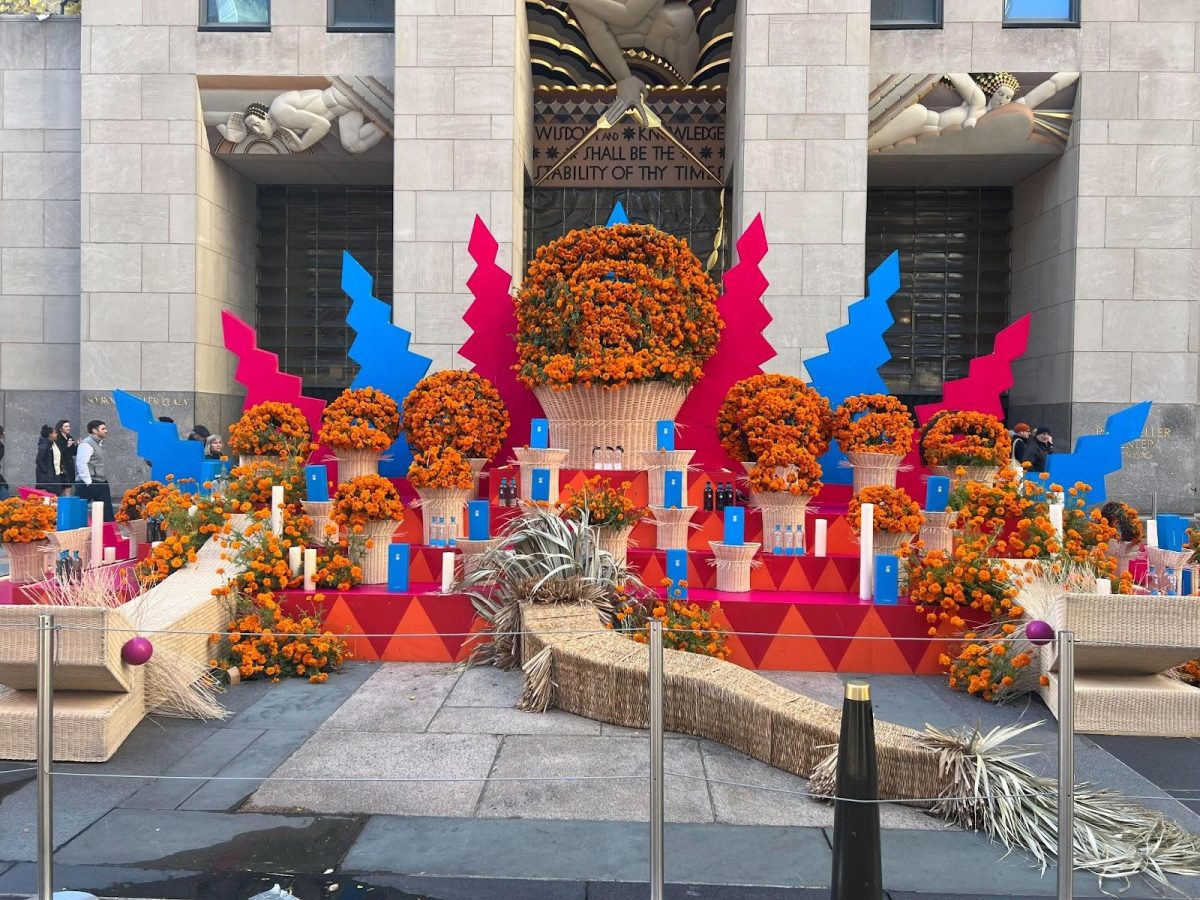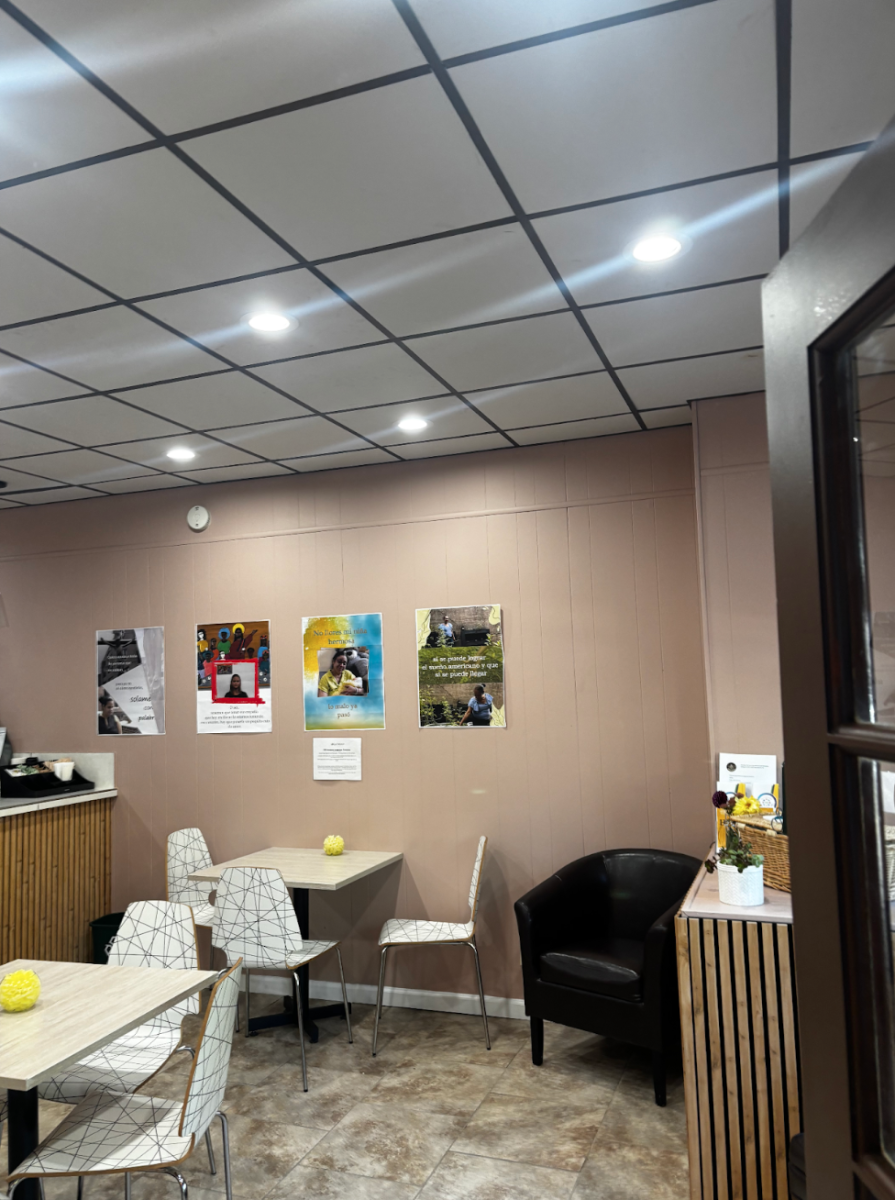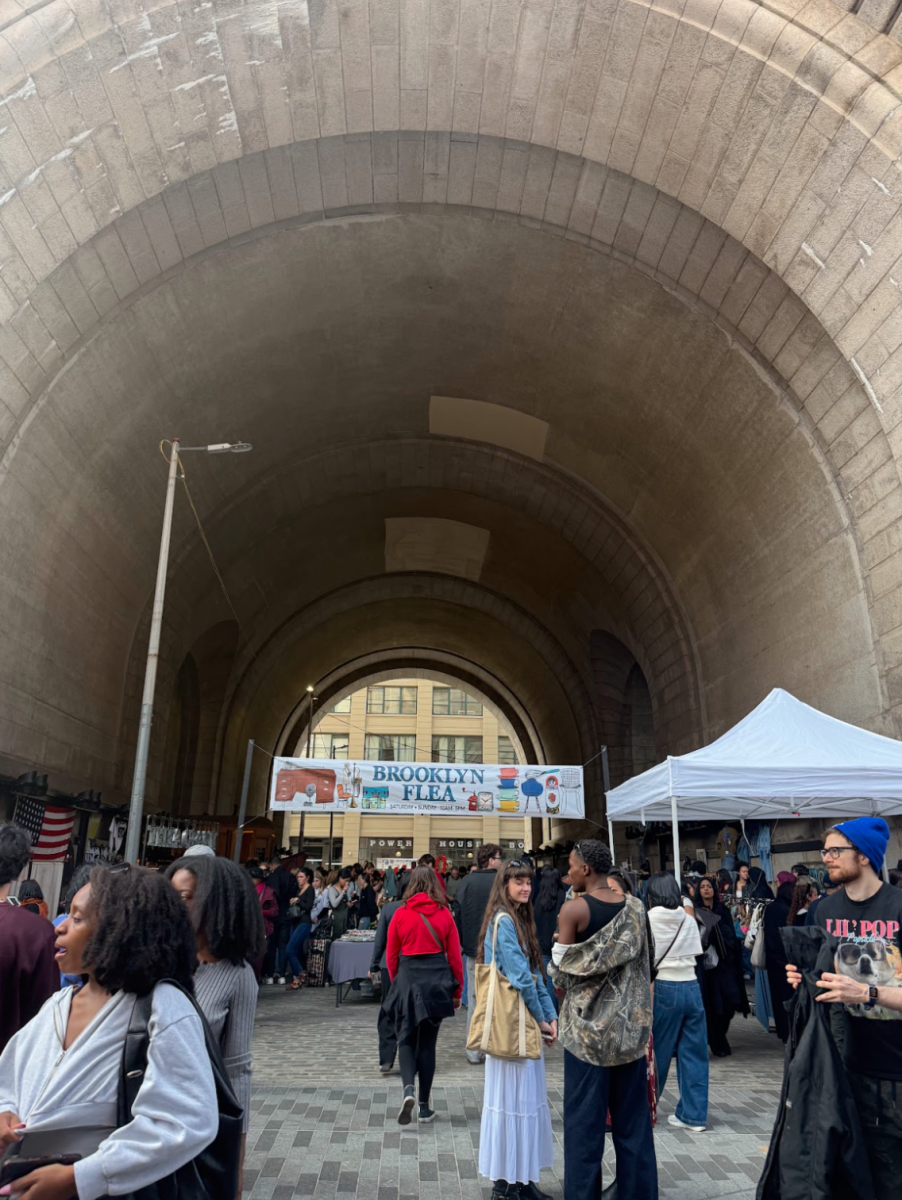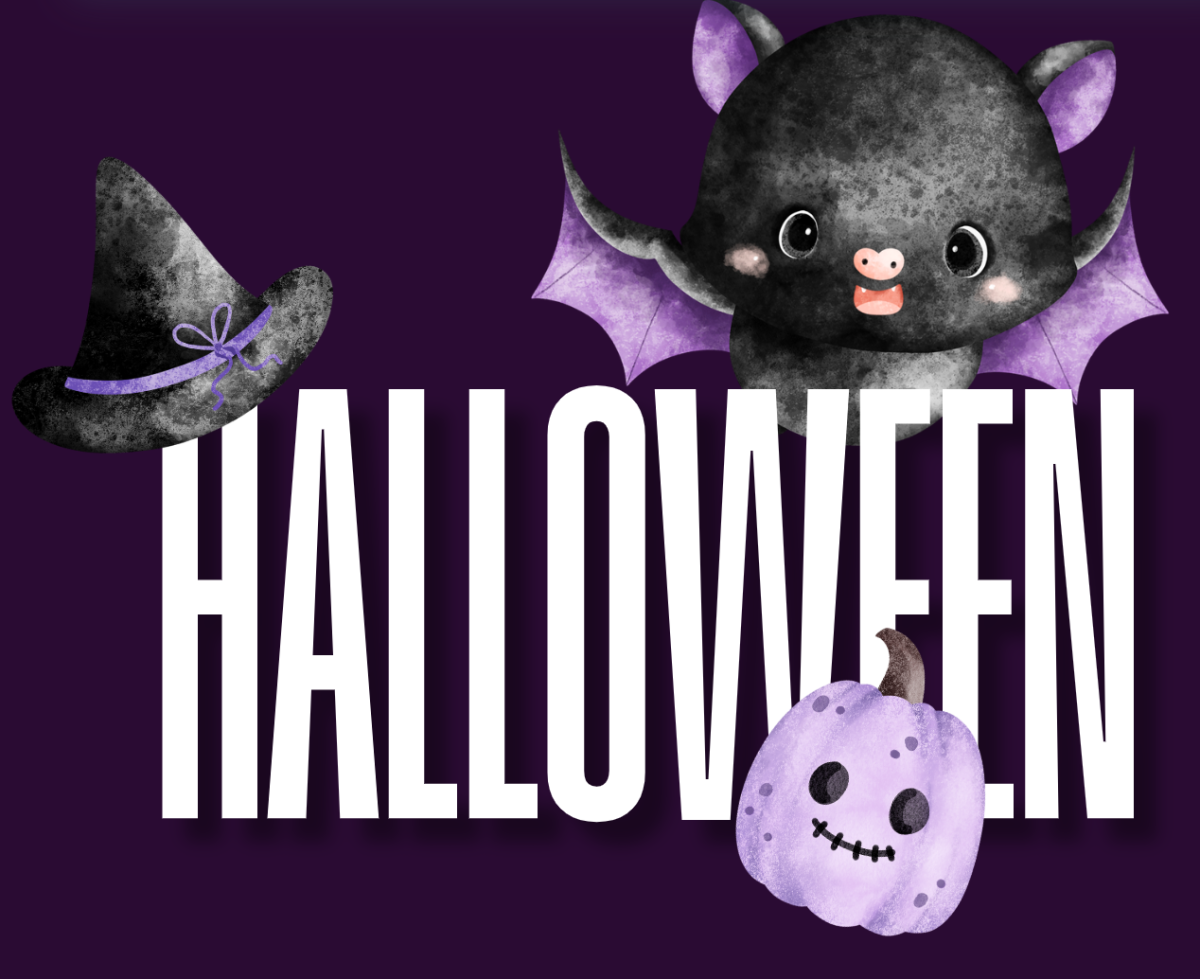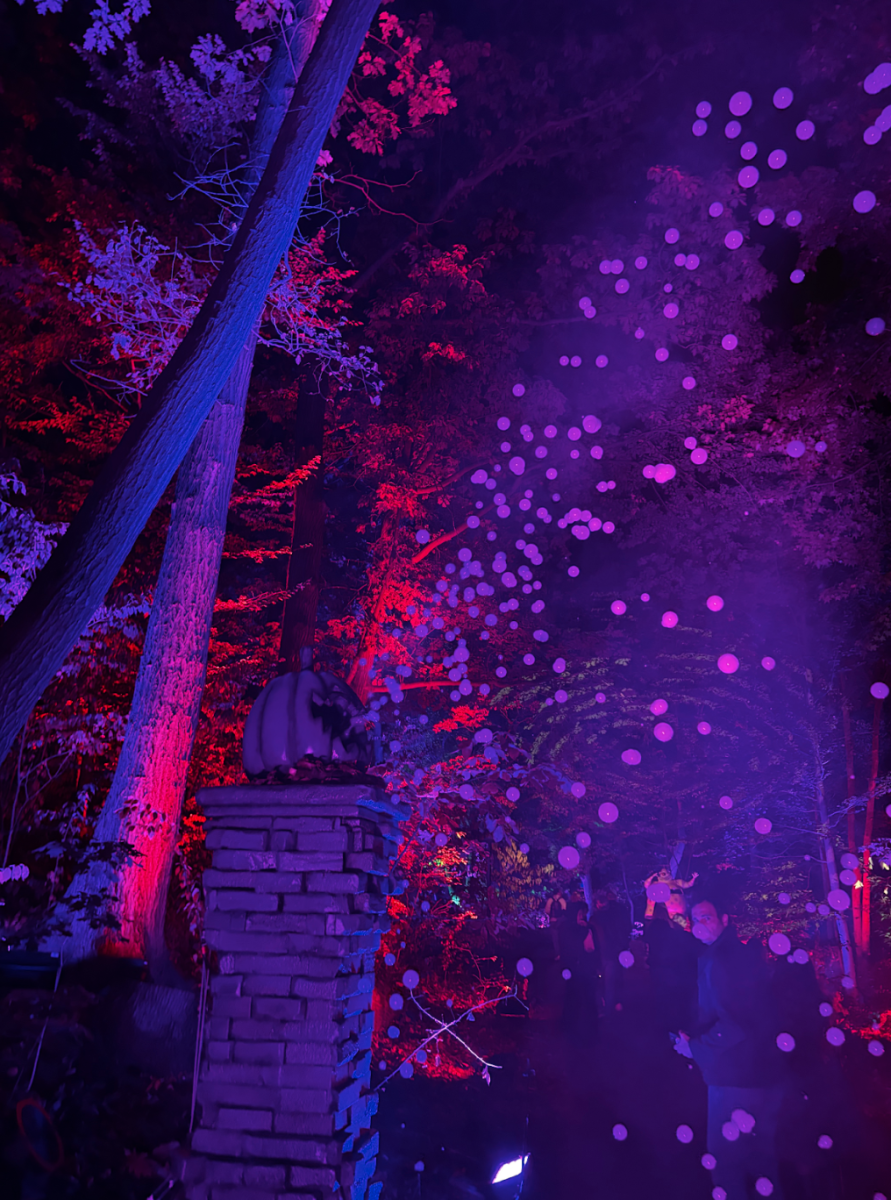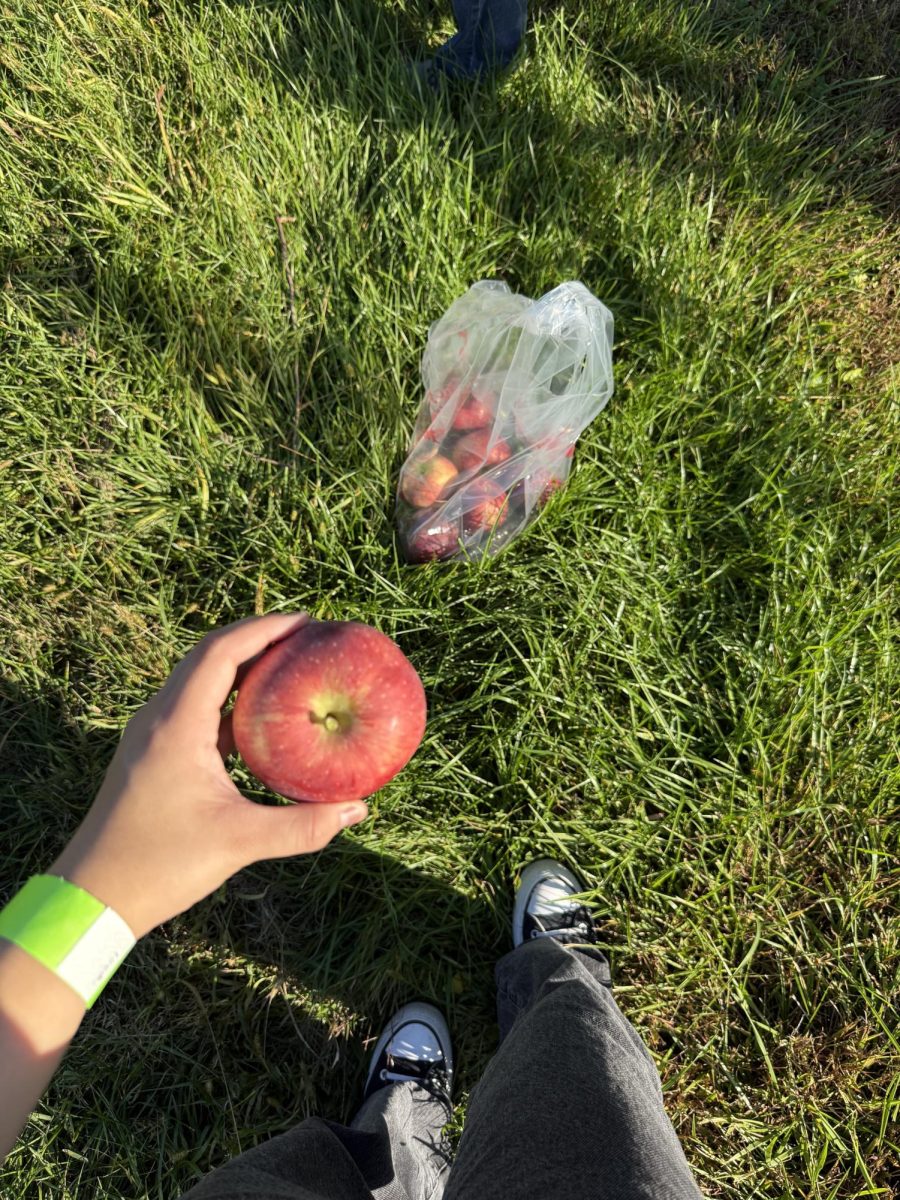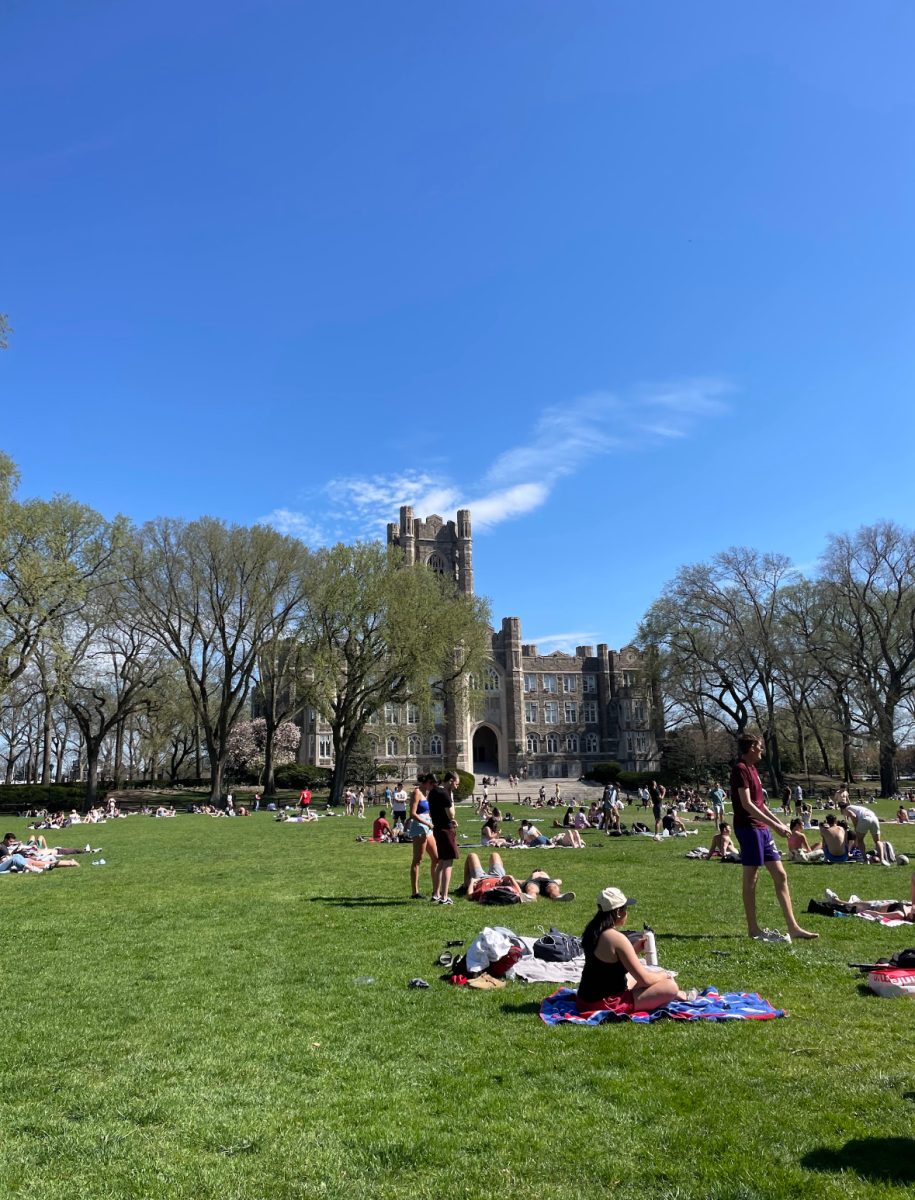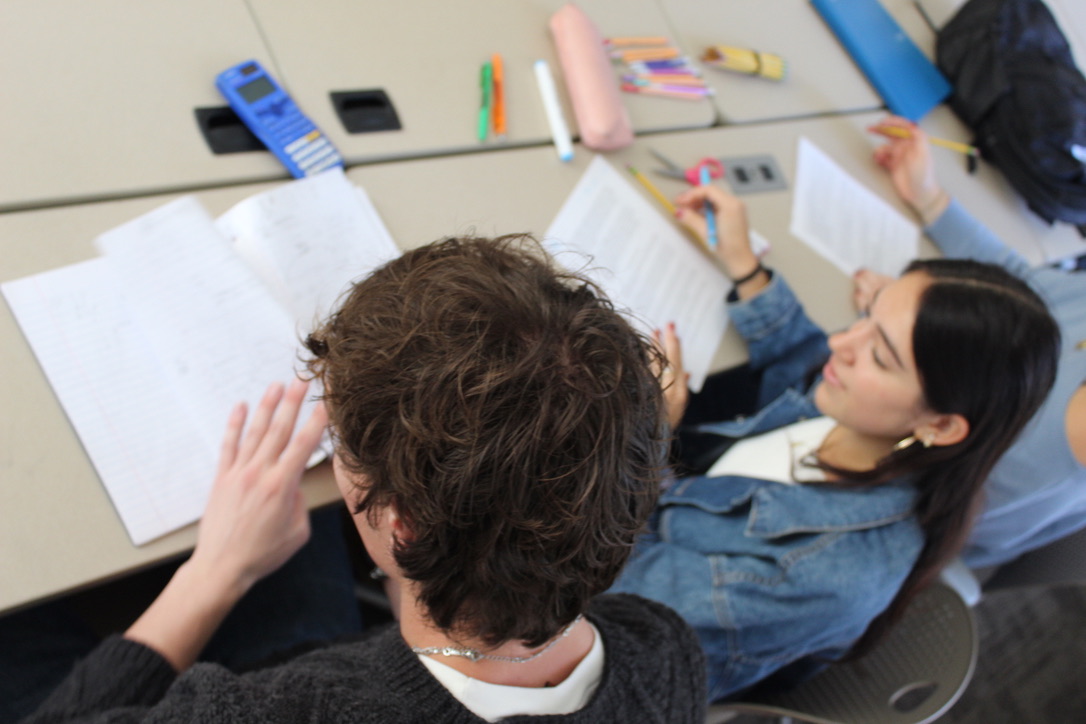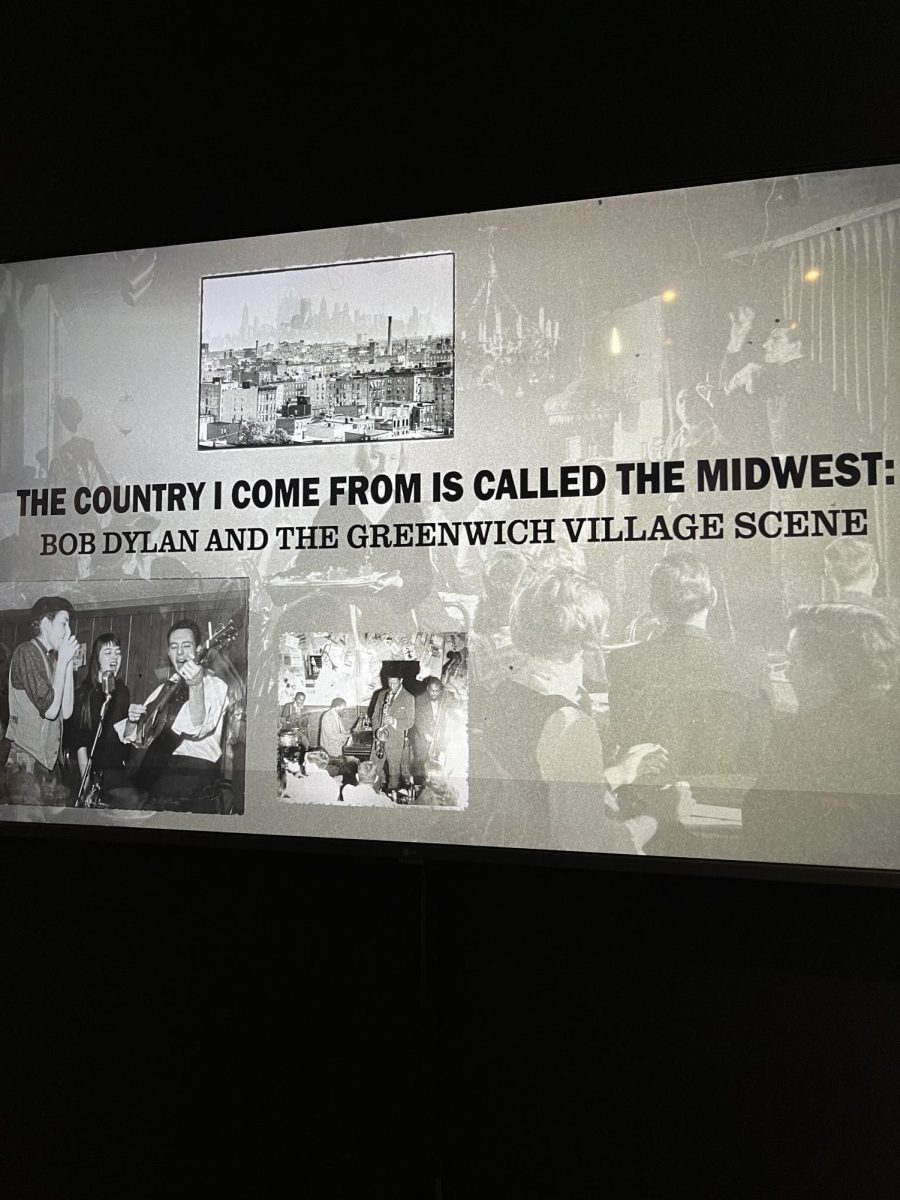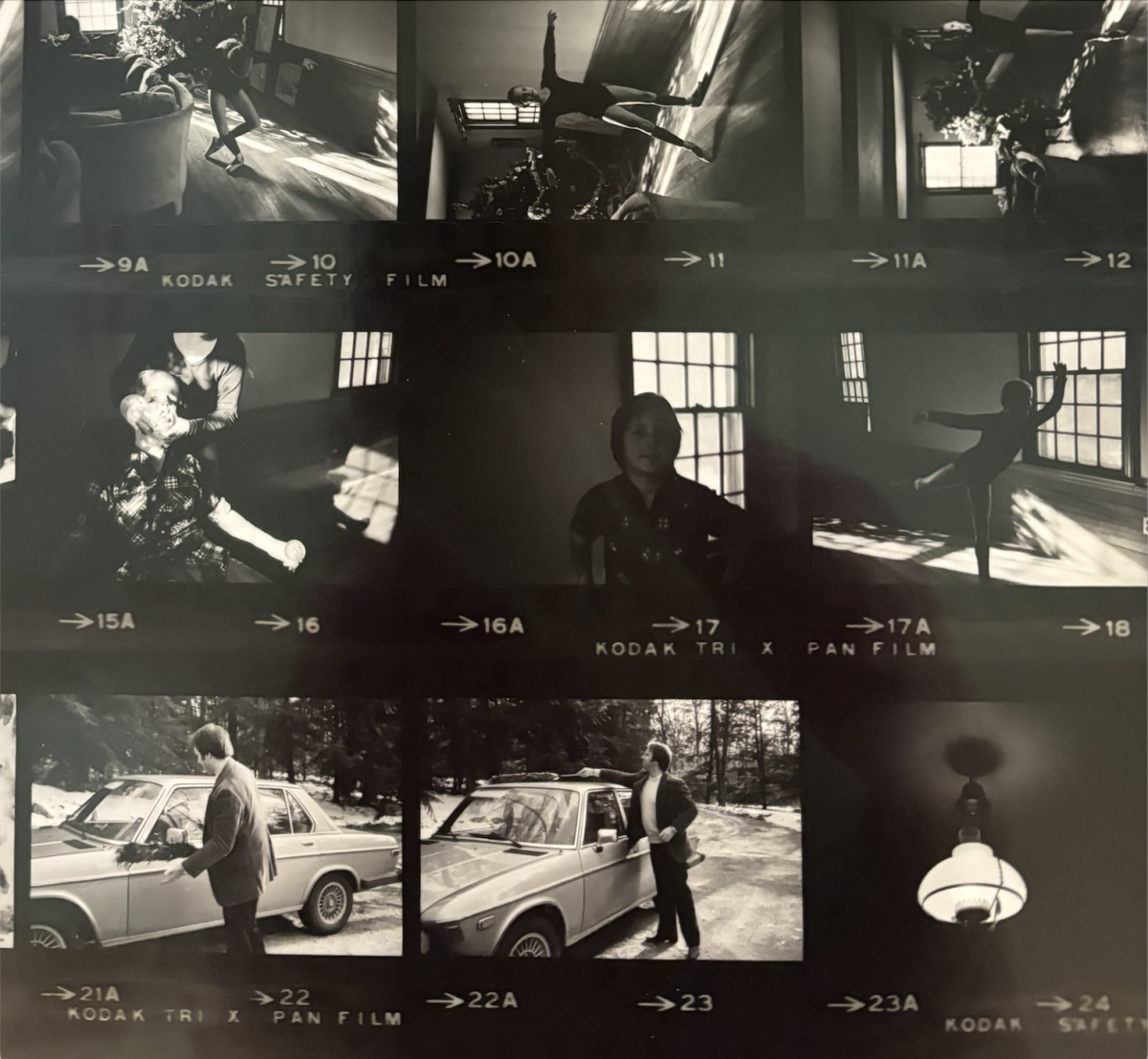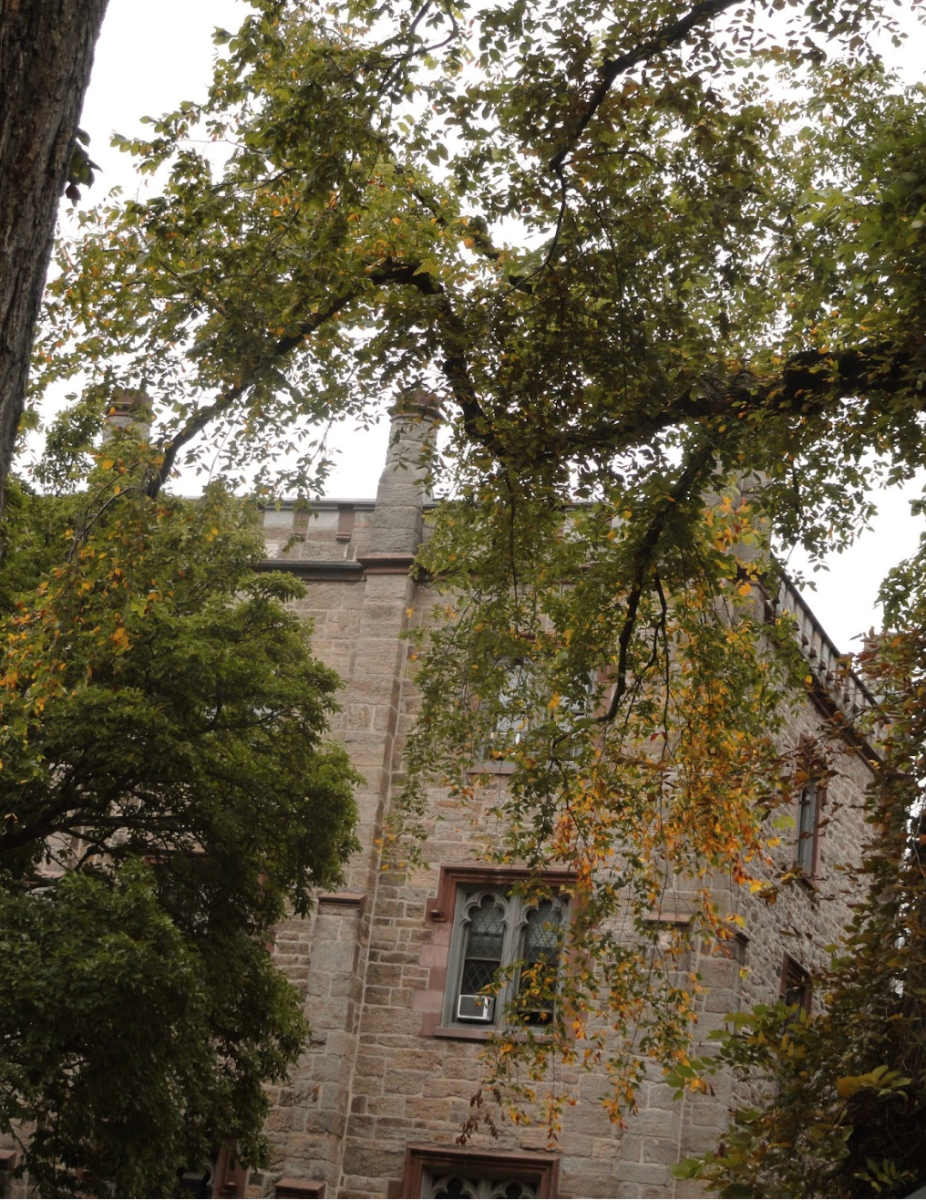Rockefeller Center celebrated Day of the Dead, a Mexican tradition honoring those who have passed. The celebration took place from Oct. 27 to Nov. 2. Rockefeller’s Center Plaza featured a beautiful ofrenda to celebrate and remember loved ones, the work of Mexican artist Daniel Valero.
Día de los Muertos, also known as Day of the Dead, is a Mexican holiday that invites the souls of those who have passed to come back to the living world to celebrate with loved ones, through dance, music, food and drinks. Day of the Dead is believed to dissolve the border between the dead and the living. This tradition is commonly brought to life through ofrendas, an altar honoring the lives of lost loved ones. Candles, photos, favorite foods and flowers are typically found in ofrendas. This tradition is a celebration of life, and remembering past lives is an important part of that.
On the Rockefeller Center website, loved ones are invited to pin photos or letters to the back of the ofrenda to remember the dead, and to take photos on the reptilian benches. There were few photos and letters pinned to the back and the section around the altar was blocked off from the public accompanied by two security guards. The attempt to keep the display secure took away from the public’s ability to interact with the ofrenda at all times of the day. Only from 12 p.m. to 5 p.m. was there a timed altar participation where individuals were welcome to pin and take photos on the reptilian benches.
The “Mexico Week: Día de Muertos at Rockefeller Center’s” display is presented by Tequila Casa Dragones, insurance company INTERprotección and the Consulate General of Mexico in New York City. Signs around the display shared that the “Los Dos Soles” ofrenda by Daniel Valero of Mestiz Design Studio based in San Miguel de Allende “exists as a symbolic portal to San Miguel de Allende, where a similar ofrenda will be showcased simultaneously at La Casa Dragones, the home of Tequila Casa Dragones.” This display asked guests to welcome the duality of life and challenged the borders of space and time, as the displays were united across two locations.
Signs around the ofrenda were accompanied by a QR code to shop Tequila Casa Dragones online. Despite its celebratory nature, it seems counterintuitive to use Day of the Dead as a marketing tool to profit off of a deeply rooted cultural tradition to honor the dead.
Then again, without the work and sponsorship of Tequila Casa Dragones, this display may not have been possible. This was the third year Tequila Casa Dragones and Rockefeller Center presented Mexico Week and offered a free art display for the public to enjoy. Seeing the smiles of people passing and taking photos with the display brought a sense of remembrance and love within the infamous hustle and bustle of New York City.
Mexico Week was filled with numerous activities including traditional Day of the Dead Catrina face painting, performances by Mariachi bands, a performance by Mexican dancer and choreographer Diego Vega Solorza and Tequila Casa Dragones sampling. Puya Tacos de Puebla also had a pop-up cart of homemade Mexican food. Many of these events were free for the public to enjoy, bringing enriching Mexican cultural experiences to the heart of New York City.
This beautiful ofrenda by Daniel Valero and the events that accompanied it have been enjoyed by thousands of people, even just in passing. The amount of people that stopped and took a moment to appreciate the altar was shocking for New York City, a place where even the most extraordinary things are often overlooked. The unexpected piece brought Mexican culture, and its tradition of Día de los Muertos, to many different individuals.
The Day of the Dead celebration at Rockefeller Center highlighted Mexican culture through Mexican art, Mexican music, Mexican food and a Mexican company; all parties brought to light a beautiful tradition to honor and celebrate loved ones who have passed.





































































































































































































